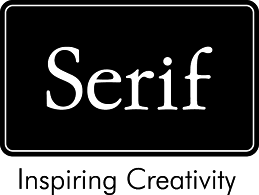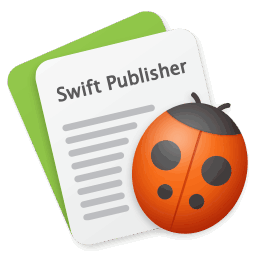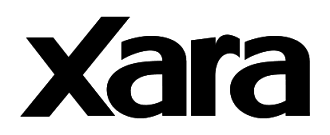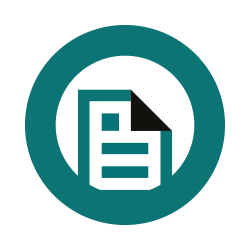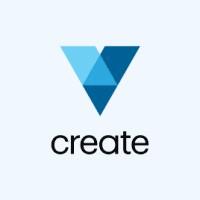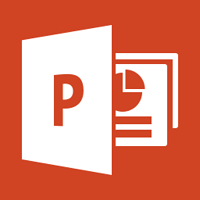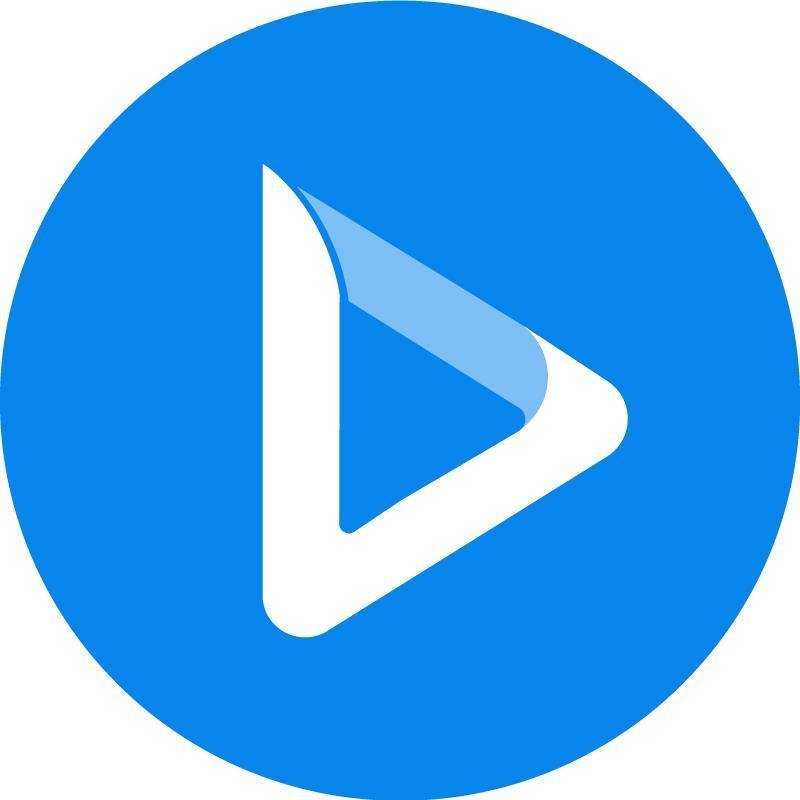What Is Desktop Publishing Software?
A specific type of software called desktop publishing software is made to assist users in producing publications, images, and papers that seem professional. It creates print-ready items like flyers, brochures, newsletters, and more by combining text, graphics, and layout elements. Businesses, organizations, and people utilize it extensively for communication and marketing.
Desktop publishing software gives users total control over the style and appearance of their papers by offering a vast array of tools and capabilities for creating and modifying text and graphics. To aid customers in getting started fast and easily, the majority of software products provides templates and pre-designed layouts. Furthermore, sophisticated capabilities like picture editing, color management, and typography enable the production of documents that are both aesthetically pleasing and of excellent quality.
The ability of desktop publishing software to manage intricate layouts and substantial volumes of text and graphics is one of its primary benefits, making it a vital tool for publishers and enterprises. The increasing popularity of content marketing has made this software even more essential for producing eye-catching marketing collateral that can attract potential clients.
The market is filled with several desktop publishing software solutions, each with an own set of features and functionalities. Finding the ideal software requires taking your budget and unique requirements into account. Serif Affinity Publisher, Microsoft Publisher, and Adobe InDesign are a few well-liked choices.
What Are The Recent Trends In Desktop Publishing Software?
Every year, new trends and technology are introduced into the desktop publishing software industry, which is always changing. Keeping up with all the market trends as a buyer might be overwhelming. To assist you in making an informed choice, we have conducted the necessary research and put together a list of the most recent developments in desktop publishing software.
1. Cloud-Based Software: The move to cloud-based solutions is one of the largest trends in desktop publishing software. This enables users to utilize any device, from any location, to access and work on their projects. The design process is now more simplified and efficient thanks to this trend, which has created new opportunities for remote and collaborative work.
2. Mobile Compatibility: The need for desktop publishing software to be mobile compatible is growing as smartphones and tablets become more popular. Software that enables users to produce, modify, and publish material straight from their mobile devices has been developed as a result of this trend, making it simpler to work while on the go.
3. Artificial Intelligence: AI technology has entered the desktop publishing software market, improving the accuracy and efficiency of operations like layout creation, font selection, and image editing. Software driven by artificial intelligence (AI) can evaluate user information and preferences to provide the best design solutions, saving time and enhancing output quality overall.
4. Software Integration: Desktop publishing software is increasingly being made to integrate easily with other software, including content management systems and photo editing applications. A more uniform design aesthetic across platforms and a more efficient workflow are made possible by this.
5. User-Friendly Interface: Developing user-friendly desktop publishing software interfaces has gained popularity in recent years. This movement seeks to increase the software's usability for users with different technical skill levels so they may produce expert designs without requiring a lot of training.
6. Personalization And Customisation: The emphasis on personalization and customisation features is another trend in desktop publishing software. Users are looking for software that enables them to make distinctive and customized designs for their brand as personal branding becomes popularity. Software with sophisticated customisation tools and capabilities has been developed as a result of this trend.
Benefits Of Using Desktop Publishing Software
Desktop publishing software is an effective tool that can assist companies, people, and groups in producing papers, layouts, and drawings that look professional for a range of uses. Desktop publishing software has several features that can help you work more effectively and efficiently, whether you're a graphic designer, marketing expert, or just trying to develop eye-catching documents for your own use.
1. User-Friendly Interface: One of the primary advantages of desktop publishing software is its intuitive interface, which enables even novices to produce excellent designs with no experience or training. You can create brochures, flyers, posters, business cards, and more quickly and easily with the use of simple tools, templates, and drag-and-drop capabilities.
2. Customization Possibilities: A variety of customization choices are available in desktop publishing software, enabling you to build distinctive and customized designs that meet your particular requirements. To produce visually appealing products that represent your company or personal style, you can select from a variety of fonts, colors, layouts, and photos.
3. Time And Cost-Effective: Desktop publishing software saves time and money when compared to conventional printing techniques. You don't need to wait for lengthy lead times or rely on outside printing providers when you can design, edit, and print items internally. In the long term, this can save you money and time.
4. Versatility: Desktop publishing software has several features that let you make different kinds of materials for varied uses, from designing magazines to making business cards. Because of its adaptability, it's a useful tool for marketers, entrepreneurs, and small businesses who might need to come up with different designs for their brand.
5. Excellent Output: Desktop publishing software's sophisticated design tools and features enable you to produce output of the highest caliber that seems polished and professional. To guarantee that your finished work is of the greatest caliber, you can edit your design, change colors, and manipulate photos until you are satisfied.
6. Simple Collaboration: A lot of desktop publishing software packages come with collaboration tools that let several team members work on the same project at once. Businesses or organizations with a remote staff may benefit from this since it improves communication and expedites the design process.
7. Widely Compatible: Regardless of the user's favorite software or device, sharing files and working together is made simple by the fact that the majority of desktop publishing software packages are compatible with a wide range of operating systems and devices. This guarantees a smooth workflow and easy team communication.
Important Factors To Consider While Purchasing Desktop Publishing Software?
There are a number of crucial aspects to take into account when considering to buy desktop publishing software in order to make an informed choice. You may choose the ideal software that fits your needs and budget by carefully weighing each of these variables.
1. Compatibility With Devices And Operating System: The first thing to think about is if the desktop publishing program works with your devices and operating system. To prevent any compatibility problems, make sure to review the software's system requirements before making a purchase.
2. Features And Tools: Since every desktop publishing program has a unique set of features and tools, it's critical to assess your unique requirements. Select software that provides the features you require to edit text, make graphics, and build layouts.
3. User-Friendly Interface: Your desktop publishing experience can be greatly enhanced by an intuitive interface. Even if you have never used such software before, look for programs that are straightforward to use and have an intuitive UI.
4. Price And Budget: When buying desktop publishing software, it's important to take your budget into account because prices can vary significantly. To get the most for your money, compare the features and costs of several software programs.
5. Customer Assistance: Having access to trustworthy customer assistance is essential because technical problems or inquiries may come up when utilizing desktop publishing software. Verify whether the product provides email, phone, or live chat help, then select the one that provides the degree of assistance you require.
6. Integration And File Compatibility: Make sure the desktop publishing program you select can easily interact with any other design tools you may already have. To prevent any compatibility problems, make sure the software supports the file types.
7. Reviews And Ratings: You may learn a lot about the software's usability and performance by reading customer reviews and ratings. To make an informed choice, take into account both favorable and unfavorable reviews.
8. Trial Or Demo Version: Before making a purchase, consumers may test out a lot of desktop publishing software by using the trial or demo versions. Use these to experience the software and determine whether it suits your needs. You can choose the desktop publishing program that best fits your requirements and price range by taking these crucial criteria into account. To make sure you get the most out of your investment, take your time investigating and weighing your options before deciding.
What Are The Key Features To Look For In Desktop Publishing Software?
The following essential qualities should be given top priority when deciding which desktop publishing program to purchase:
1. User-Friendly Interface: To facilitate simple navigation and rapid tool access, the program should have an intuitive and user-friendly interface.
2. Design Capabilities: Seek out a program that has a variety of design features, including editable fonts, graphics, and layout possibilities. This will guarantee that you can produce designs that are both aesthetically pleasing and professional-looking.
3. Multi-Platform Compatibility: Having an application that works with both Mac and PC operating systems as well as mobile devices is crucial in today's digital environment. This will make it easy for you to collaborate with colleagues and work on projects from any location.
4. Template Library: Since you may start with pre-made layouts and modify them to suit your needs, a large library of templates can help you save time and effort when developing. Verify that the program provides a range of templates for various project kinds.
5. Image Editing Tools: Since it removes the need for a separate image editing program, the ability to modify photos within the software can be revolutionary. Seek out software that offers simple editing features like cropping, resizing, and color correction.
6. Typography Options: Your project's overall design can be significantly improved by selecting the appropriate typefaces. Seek out software that provides customization options like text effects, line spacing, and kerning, along with a wide selection of fonts.
7. File Compatibility: To guarantee smooth interaction with other applications, it is essential to select software that supports a variety of file formats, such as PDF, JPEG, PNG, and TIFF.
8. Collaboration Features: If you collaborate with others, search for software that makes file sharing and teamwork simple. This will let team members communicate with each other and expedite the design process.
9. Client Service: Take into account the software company's degree of client service. In addition to online lessons and thorough user manuals, look for choices like phone, email, and live chat help. You may choose the ideal desktop publishing program that suits your requirements and makes it simple for you to produce designs of expert quality by keeping these important characteristics in mind.
Why Do Businesses Need Desktop Publishing Software?
To produce polished and eye-catching marketing materials like brochures, flyers, newsletters, and business cards, businesses require desktop publishing software. They can create and arrange text, graphics, and photos with this software in an orderly and aesthetically pleasing way. It enables companies to successfully communicate with prospective clients and differentiate themselves in a crowded industry.
Businesses can save time and money by using desktop publishing software's templates and design capabilities instead of hiring a professional designer to generate their marketing collateral. Businesses may also quickly alter and modify their materials with this program, keeping them current with the most recent information.
Additionally, desktop publishing software allows companies to have creative control over their advertising collateral. They are able to improve the design, incorporate distinctive components, and customize it to fit the identity of their brand. This aids companies in developing a unified and consistent brand image for all of their promotional materials. Furthermore, desktop publishing software has sophisticated features like data merging, which enables companies to combine information from databases or spreadsheets to produce customized materials for their customers.
Its collaboration features also make it simpler for team members to collaborate on a project, even if they are spread out geographically. Additionally, desktop publishing software might ultimately save firms money. Businesses can design and print their own documents instead of engaging a designer or paying for printing services on a regular basis, which lowers costs and boosts profit margins.
All things considered, desktop publishing software is a crucial tool for companies looking to save time and money, produce polished and eye-catching marketing collateral, and enhance the perception of their brand. Better marketing efforts, higher consumer involvement, and eventually corporate expansion can result from investing in this software.
How Much Time Is Required To Implement Desktop Publishing Software?
Depending on the particular program and the user's degree of experience, desktop publishing software might have varying implementation times. Implementing desktop publishing software completely and being familiar with its features and tools can often take a few hours to a few weeks. It usually just takes a few minutes to set up and install the program initially.
The intricacy of the projects, the user's design abilities, and the amount of time spent studying and practicing will all affect how long it takes to get up and running with the software and produce designs that appear professional. It is advised that novices set aside at least a few hours to become acquainted with the features and interface of the software.
This include playing with various functions, reading user manuals, and watching instructional videos. It may take less time for more seasoned users to learn and adjust. The length of time needed for actual design projects will depend on the project's complexity, the volume of photos and content, and the user's level of software expertise.
While more complicated projects could take days or longer to finish, simple designs might only take a few minutes or hours. It is crucial to remember that continuous software practice and experimentation will eventually result in quicker implementation and better design outcomes. Desktop publishing software may take some time to completely deploy, but the time and work invested will eventually pay off in the shape of polished and expertly designed designs.
What Is The Level Of Customization Available In Desktop Publishing Software?
With the help of desktop publishing software, both people and companies may produce publications of professional quality, including newsletters, magazines, and brochures, without having to pay for pricey design services. The degree of customisation offered by desktop publishing software is one of its primary characteristics, enabling users to completely alter their designs to suit their unique requirements.
Although the degree of customisation offered will differ based on the software, the majority of trustworthy desktop publishing programs provide a large number of tools and options to enable users to produce original and expert designs. Changing fonts, colors, layouts, photos, and other elements is part of this. Users may effortlessly develop unique text and graphic styles with desktop publishing software, guaranteeing consistency across their works.
Additionally, they have the ability to import and edit photos, allowing them to freely change the size, color, and other visual components to create the desired effect. Additionally, a lot of desktop publishing applications provide design layouts and templates that can be completely altered to meet the demands of the user. This allows for a personalized touch while saving time and effort.
Furthermore, some software has sophisticated features including the capacity to produce interactive texts, incorporate effects and animations, and even produce 3D designs. With the help of these sophisticated modification choices, customers may produce genuinely original and captivating content and elevate their designs.
It's also important to note that users now have more customization choices for remote access and collaboration thanks to the growth of online and cloud-based desktop publishing tools. This enables groups to collaborate on a single project, making adjustments and updates in real time to guarantee a unified and customized end result.
Which Industries Can Benefit The Most From Desktop Publishing Software?
Desktop publishing software is an effective tool that may help a lot of different organizations and sectors. With the use of this software, users can design, produce, and publish documents that seem professional, including newsletters, flyers, and brochures. For companies and organizations that depend on aesthetically appealing content to draw in and keep their target audience interested, its features and tools make it a vital resource. Desktop publishing software is especially advantageous for the following industries:
1. Marketing And Advertising: To stand out in the fiercely competitive field of marketing and advertising, companies must continuously provide visually appealing and eye-catching material. With the use of desktop publishing software, marketers and advertisers can develop visually appealing documents that successfully convey their message to potential clients.
2. Education: Desktop publishing software has a lot to offer educational establishments, such as colleges, universities, and training facilities. Teachers may design visually appealing lesson plans, educational posters, and handouts for their students using its extensive collection of templates, fonts, and pictures. This not only makes learning more engaging, but it also makes the process of producing and disseminating instructional materials more efficient.
3. Publishing: By giving authors a simple and affordable means of self-publishing their books and periodicals, desktop publishing software has completely transformed the publishing sector. Authors can use this software to format and design their books, add pictures and illustrations, and even produce digital versions of their works for tablets and e-readers.
4. Non-Profit Organizations: To increase awareness and draw in donations, non-profit organizations frequently use eye-catching and educational materials. These groups can convey their mission and stories with the public by using desktop publishing software to create visually appealing products like newsletters, brochures, and posters.
5. Small Firms: Budgets and resources for marketing and design are sometimes constrained for small firms, particularly startups. To build a strong brand identity and draw in clients, desktop publishing software provides an inexpensive way to produce documents that seem professional, like business cards, letterheads, and product catalogs.
Conclusion
In conclusion, any company or individual wishing to produce polished and eye-catching designs must select the appropriate desktop publishing software. Following extensive investigation and evaluation, we have identified the most important aspects to take into account when choosing desktop publishing software. Prioritizing the elements that are most essential to you will be made easier if you first identify your unique demands and goals.
Take into account the intricacy of your projects, the kind of designs you will be producing, and the degree of personalization needed. Second, evaluate the software's usability and user interface. To make the design process easier and more effective, look for a program that provides an intuitive interface and features. Next, think about how well the product works with other third-party apps and your operating system.
It's important to make sure the software you've selected integrates well with any other platforms and solutions you could be using. Consider the price as well as any extra charges, including those for service or upgrades. Even while certain software could cost more up front, regular upgrades and customer support could result in long-term cost benefits. Take into account the software's training and resources as well.
To get the most of your investment, look for customer service options, online courses, and tutorials. Finally, to learn more about the software's dependability and performance, read reviews and ask other users for suggestions.
Real users that have used the program and are able to share their experiences will provide you with insightful information. You can select a desktop publishing program that suits your requirements and facilitates the smooth accomplishment of your design objectives by taking these aspects into account. In your quest for the ideal desktop publishing program, we hope that this buyer's guide has been useful.


